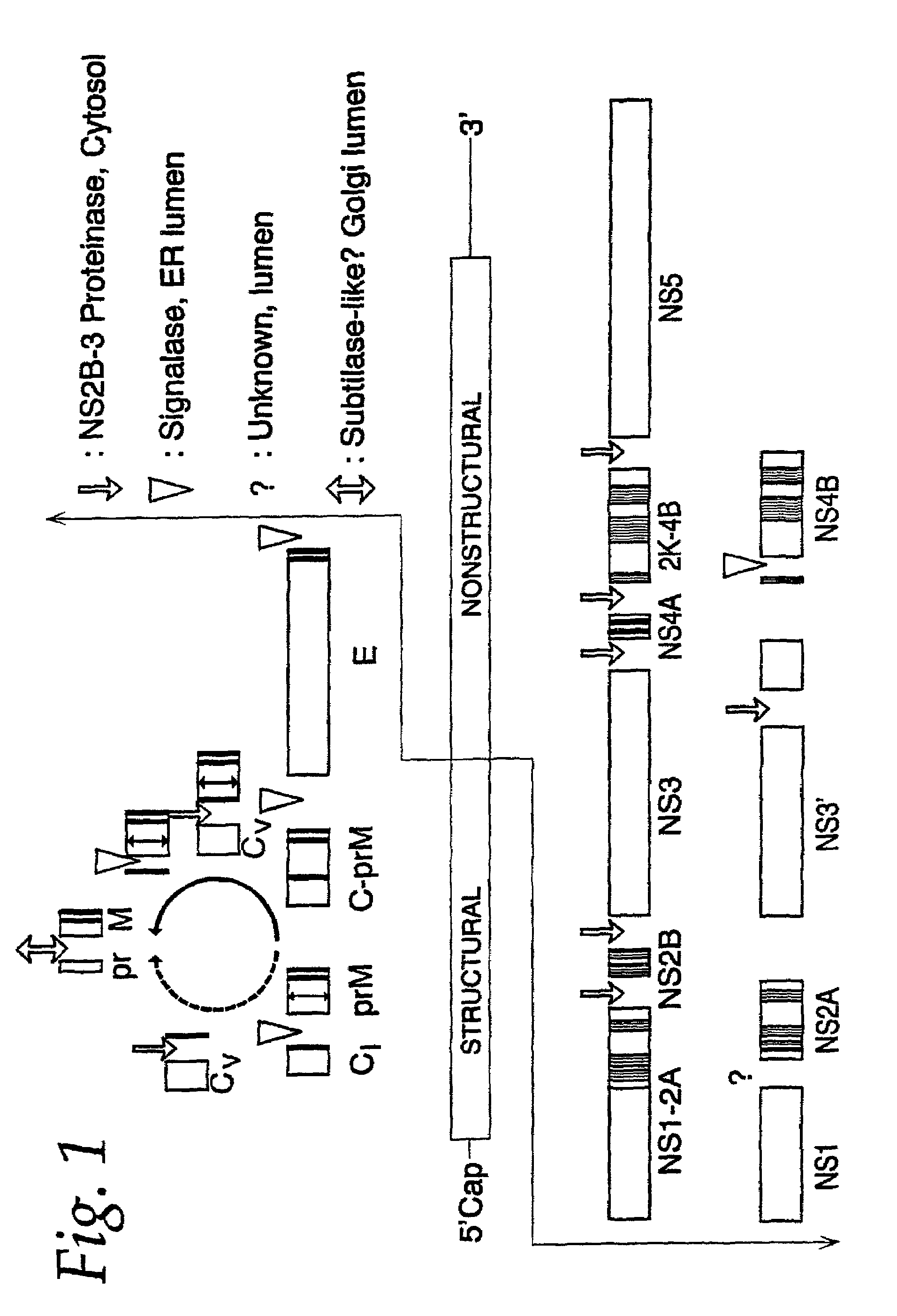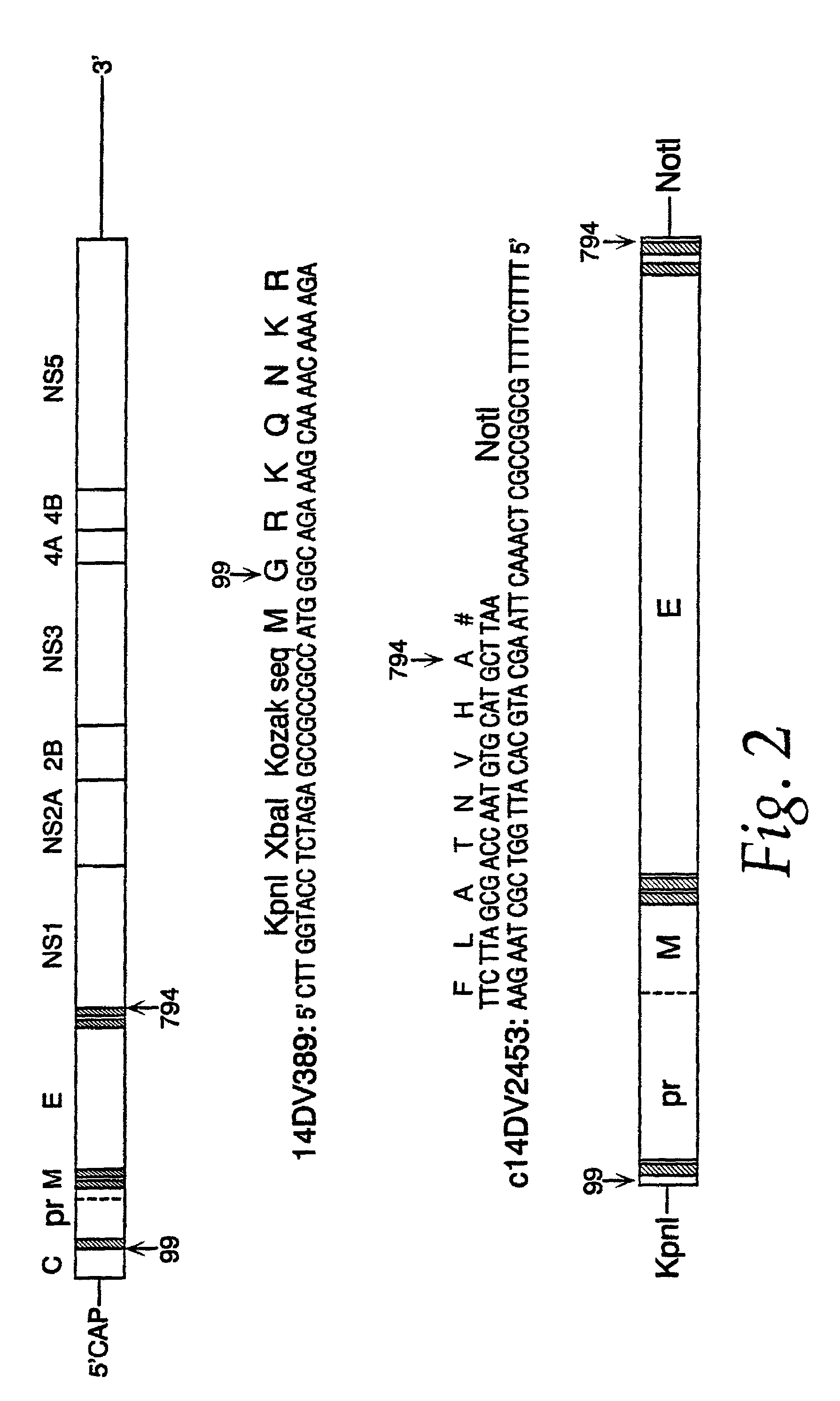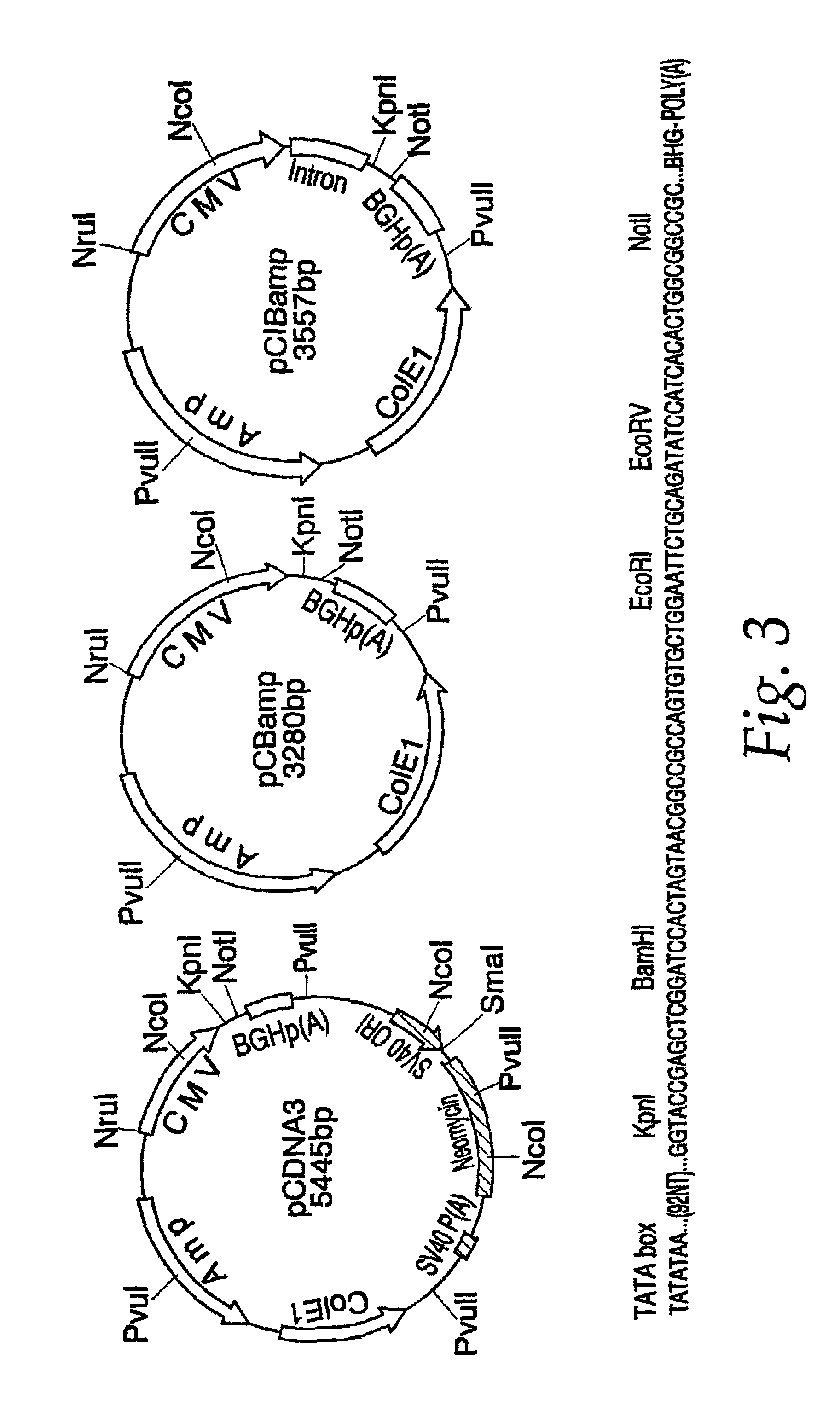Nucleic acid vaccines for prevention of flavivirus infection
a technology of nucleic acid and vaccines, applied in the field of new vaccines, can solve the problems of serious neurological consequences, disease represents a major public health problem, and the transmission is not easily interrupted or prevented, and achieves the effect of convenient preparation and administration
- Summary
- Abstract
- Description
- Claims
- Application Information
AI Technical Summary
Benefits of technology
Problems solved by technology
Method used
Image
Examples
example 1
Preparation of Recombinant Plasmids Containing the Transcriptional Unit Encoding JEV prM and E Antigens
[0056]Genomic RNA was extracted from 150 μL of JEV strain SA 14 virus seed grown from mouse brain using a QIAAMP™ Viral RNA Kit (Qiagen, Santa Clarita, Calif.). RNA, adsorbed on a silica membrane, was eluted in 80 μL of nuclease-free water, and used as a template for the amplification of JEV prM and E gene coding sequences. Primer sequences were obtained from the work of Nitayaphan et al. (1990). A single cDNA fragment containing the genomic nucleotide region 389-2478 was amplified by the reverse transcriptase-polymerase chain reaction (RT-PCR). Restriction sites Kpnl and XbaI, the consensus Kozak ribosomal binding sequence, and the translation initiation site were engineered at the 5′ terminus of the cDNA by amplimer 14DV389 (SEQ ID NO:1). An in-frame translation termination codone, followed by a NotI restriction site, was introduced at the 3′ terminus of the cDNA by amplimer c14D...
example 2
Evaluation of JEV prM and E Proteins Expressed By Various Recombinant Plasmids Using an Indirect Immunofluorescent Antibody Assay
[0060]The expression of JEV specific gene products by the various recombinant expression plasmids was evaluated in transiently transfected cell lines of COS-1, COS-7 and SV-T2 (ATCC, Rockville, Md., 1650-CRL, 1651-CRL, and 163.1-CCL, respectively) by indirect immunofluorescent antibody assay (IFA) The SV-T2 cell line was excluded from further testing since a preliminary result showed only 1-2% of transformed SV-T2 cells were JEV antigen positive For transformation, cells were grown to 75% confluence in 150 cm2 culture flasks, trypsinized, and resuspended at 4° C. in phosphate buffered saline (PBS) to a final cell count 5×106 per mL 10 μg of plasmid DNA was electroporated into 300 μL of cell suspension using a BioRad Gene Pulse™ (Bio-Rad) set at 150 V, 960 μF and 100 Ω resistance. Five minutes after electroporation, cells were diluted with 25 mL fresh mediu...
example 3
Selection of an in vitro Transformed, Stable Cell Line Constitutively Expressing JEV Specific Gene Products
[0064]COS-1 cells were transformed with 10 μg of pCDJE2-7 DNA by electroporation as described in the previous example. After a 24 hr incubation in non-selective culture medium, cells were treated with neomycin (0.5 mg.mL, Sigma Chemical Co.). Neomycin-resistance colonies, which became visible after 2-3 weeks, were cloned by limited dilution in neomycin-containing medium Expression of vector-encoded JEV gene products was initially screened by IFA using JEV HIAF. One JEV-IFA positive clone (JE-4B) and one negative clone (JE-5A) were selected for further analysis and maintained in medium containing 200 μg / mL neomycin
[0065]Authenticity of the JEV E protein expressed by the JE-4B clone was demonstrated by epitope mapping by IFA using a panel of JEV E-specific murine monoclonal antibodies (Mab) (Kimura-Kuroda et al., J Virol (45, 124-132 (1983), Kimura-Kuroda et al., J. Gen Virol 67,...
PUM
| Property | Measurement | Unit |
|---|---|---|
| Mass | aaaaa | aaaaa |
| Fraction | aaaaa | aaaaa |
| Fraction | aaaaa | aaaaa |
Abstract
Description
Claims
Application Information
 Login to View More
Login to View More - R&D
- Intellectual Property
- Life Sciences
- Materials
- Tech Scout
- Unparalleled Data Quality
- Higher Quality Content
- 60% Fewer Hallucinations
Browse by: Latest US Patents, China's latest patents, Technical Efficacy Thesaurus, Application Domain, Technology Topic, Popular Technical Reports.
© 2025 PatSnap. All rights reserved.Legal|Privacy policy|Modern Slavery Act Transparency Statement|Sitemap|About US| Contact US: help@patsnap.com



